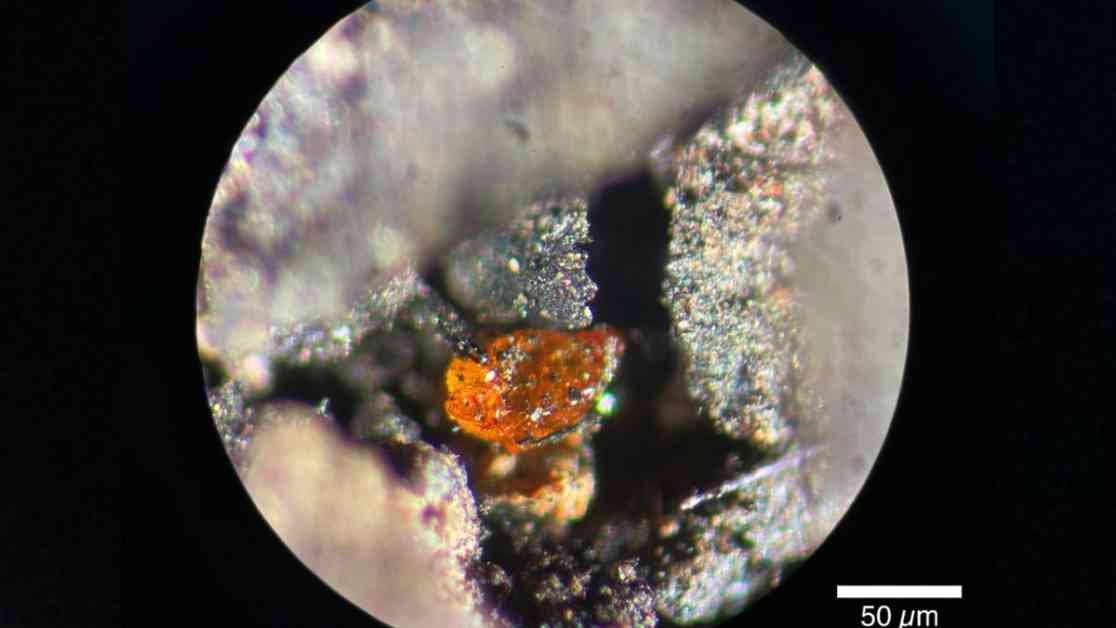Researchers have made a groundbreaking discovery in Antarctica by finding the continent’s first-ever piece of amber. This fossilized resin, unearthed from sediment cores collected beneath the seafloor off Antarctica’s coast, provides valuable insights into an ancient dinosaur-era rainforest that existed on the continent 90 million years ago.
Amber is a unique substance that can trap plants, insects, small animals, or other organic matter as it hardens, preserving them like a transparent time capsule. While amber fossils have been found on all continents except Antarctica, this recent discovery changes that narrative. The tiny piece of amber, measuring just 0.002 inch (70 micrometers) across, was identified in sediment cores taken from a depth of approximately 3,100 feet (950 meters) off the coast of Pine Island Glacier.
Dating back to the Cretaceous period, when Antarctica was covered by a temperate rainforest similar to those in New Zealand today, this amber fragment offers a glimpse into the lost ecosystem of the past. The discovery sheds light on the forest ecosystem that thrived in warmer climatic conditions millions of years ago.
In addition to the amber fragment, the sediment cores also contained fossils of roots, pollen, spores, and other remains from flowering plants, providing further evidence of Antarctica’s ancient rainforest. The researchers meticulously analyzed the amber using fluorescent microscopy, revealing micro-inclusions from bark that belonged to a conifer-like tree from the prehistoric forest.
Despite its small size, the amber fragment is remarkably well-preserved, showcasing signs of “pathological resin flow” that trees used to protect themselves from parasites or wildfires. This high-quality amber has remained intact for millions of years, offering a unique window into Antarctica’s ancient past.
The researchers are hopeful that this discovery is just the beginning and that more Antarctic amber will be found, unlocking further secrets about the prehistoric rainforest and the dinosaurs that inhabited it. This breakthrough opens up new possibilities for understanding Earth’s history and evolution, providing valuable insights into the planet’s ancient ecosystems.
This groundbreaking discovery in Antarctica highlights the importance of continued scientific exploration and research in uncovering the mysteries of our planet’s past. By studying ancient fossils and remnants, researchers can piece together the puzzle of Earth’s history and gain a deeper understanding of how life has evolved over millions of years. The findings from this study contribute to our knowledge of Antarctica’s distant past and offer a fascinating glimpse into a world long gone.










